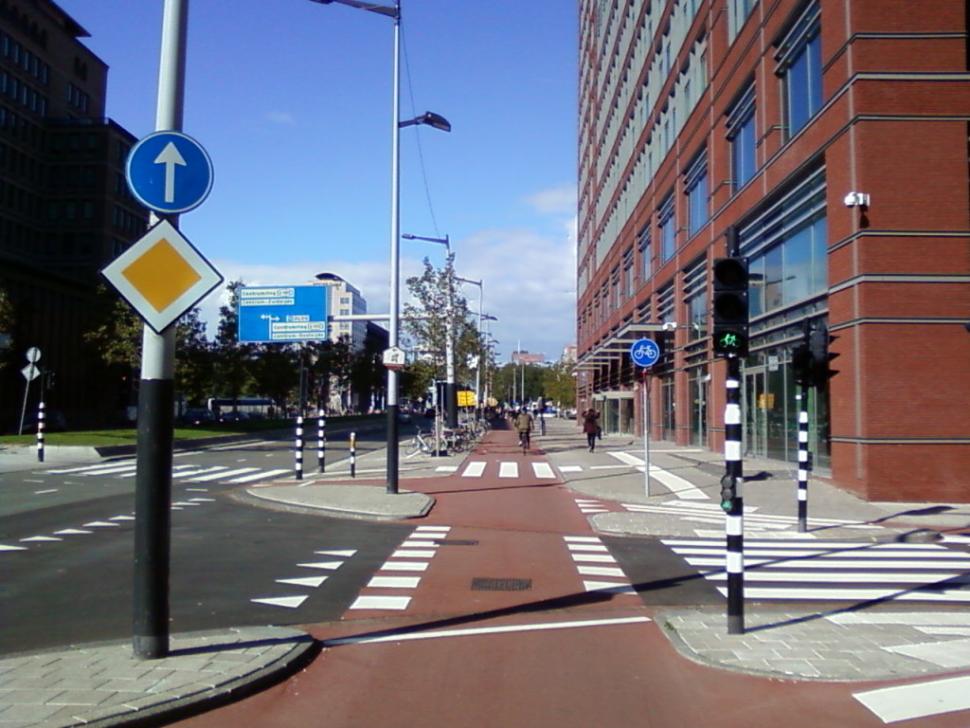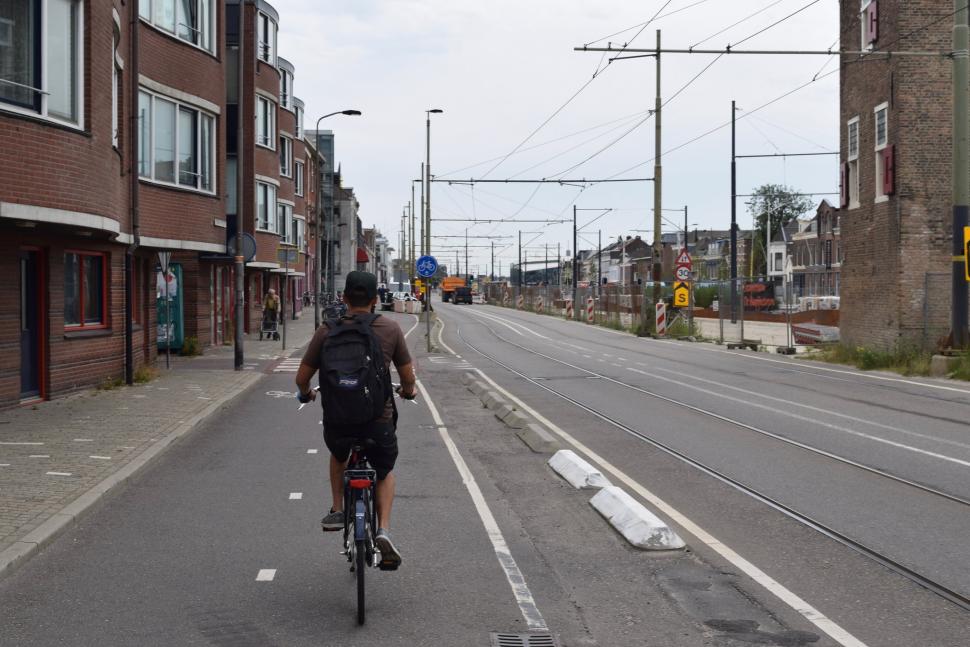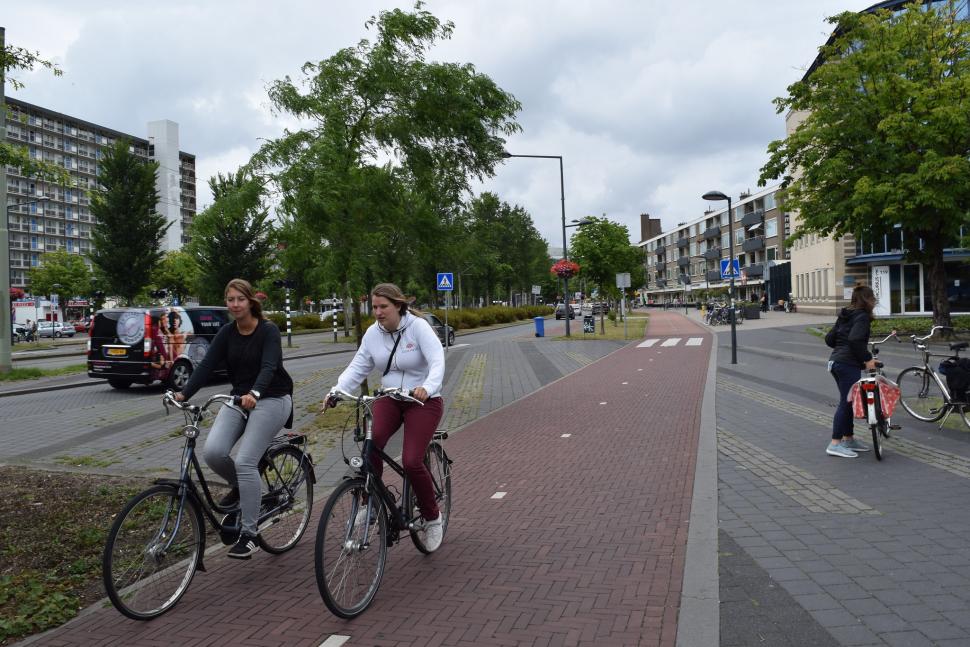The Dutch government has proposed a trial to allow local councils to introduce speed limits on cycle paths and bike lanes, the move said to be in the name of safety and coming alongside other proposals such as testing whether routes are improved by moving electric cargo delivery bikes onto roads.
Dutch News reports that caretaker infrastructure minister Robert Tieman has sent the proposal to parliament, the idea part of a multi-year cycling strategy which policy makers hope will boost safety. The aim, he has said, is to reduce speeds in cycle lanes and on bike paths, the growth of electric bikes and micromobility meaning there is now a wide range of speeds and masses using the country’s cycling infrastructure.
 Amsterdam bike path (credit: CC BY-SA 4.0/wikimedia commons)
Amsterdam bike path (credit: CC BY-SA 4.0/wikimedia commons)
It has also been suggested that local councils will be able to trial moving electric cargo bikes, primarily used for deliveries, onto roads. No formal legislation is to be finalised or decided upon until the response from the trials has been collated although, clearly, if it is a success then national traffic legislation could be updated.
The move comes as part of the aforementioned cycling strategy, the government hoping to reduce the number of cycling injuries and fatalities. Last year, around a third of the 675 people to die on Dutch roads were cyclists.
However, while a road safety research institute, Swov, has said most safety benefits would come from improving cycling infrastructure, the government has proposed this speed limit trial and set a target to increase helmet use “without leading to a reduction in people cycling”.
Within 10 years the government wants 25 per cent helmet use by focusing mainly on elderly riders, children and commuters. The current use of helmets stands at around four per cent.
Swov director Martin Damen has previously stated that “creating safer and future-proof cycling infrastructure” would be an effective step, but also suggested “encouraging helmet use could prevent many head and brain injuries”.
Commenting specifically on the latest proposal for speed limits and cargo bikes to use the roads, Swov spokesperson Wendy Weijermars said improving infrastructure should be the number one priority.
 Dutch bike path (credit: CC BY-NC 2.0/davsot on Flickr)
Dutch bike path (credit: CC BY-NC 2.0/davsot on Flickr)
“That means no obstacles alongside cycle paths, good road surfaces and safe verges,” she said.
It was back in April when we first reported the Dutch government’s ‘Zet ‘m Op’ (or ‘Put It On’) campaign for increasing helmet use – the target a 600 per cent jump compared to the country’s current helmet-donning population.
However, behavioural scientists have warned that, while the government’s attempt to encourage helmet use can succeed, it will be a “long-term process” and will face resistance in a nation where cycling is the norm but helmets are not.
The Dutch Cyclists’ Union and other activists have also criticised the scheme and its “one-sided” focus on helmets, arguing that it will lead people to associate cycling with danger, and that the key to ensuring the safety of cyclists is creating more safe infrastructure and clamping down on dangerous driving.
